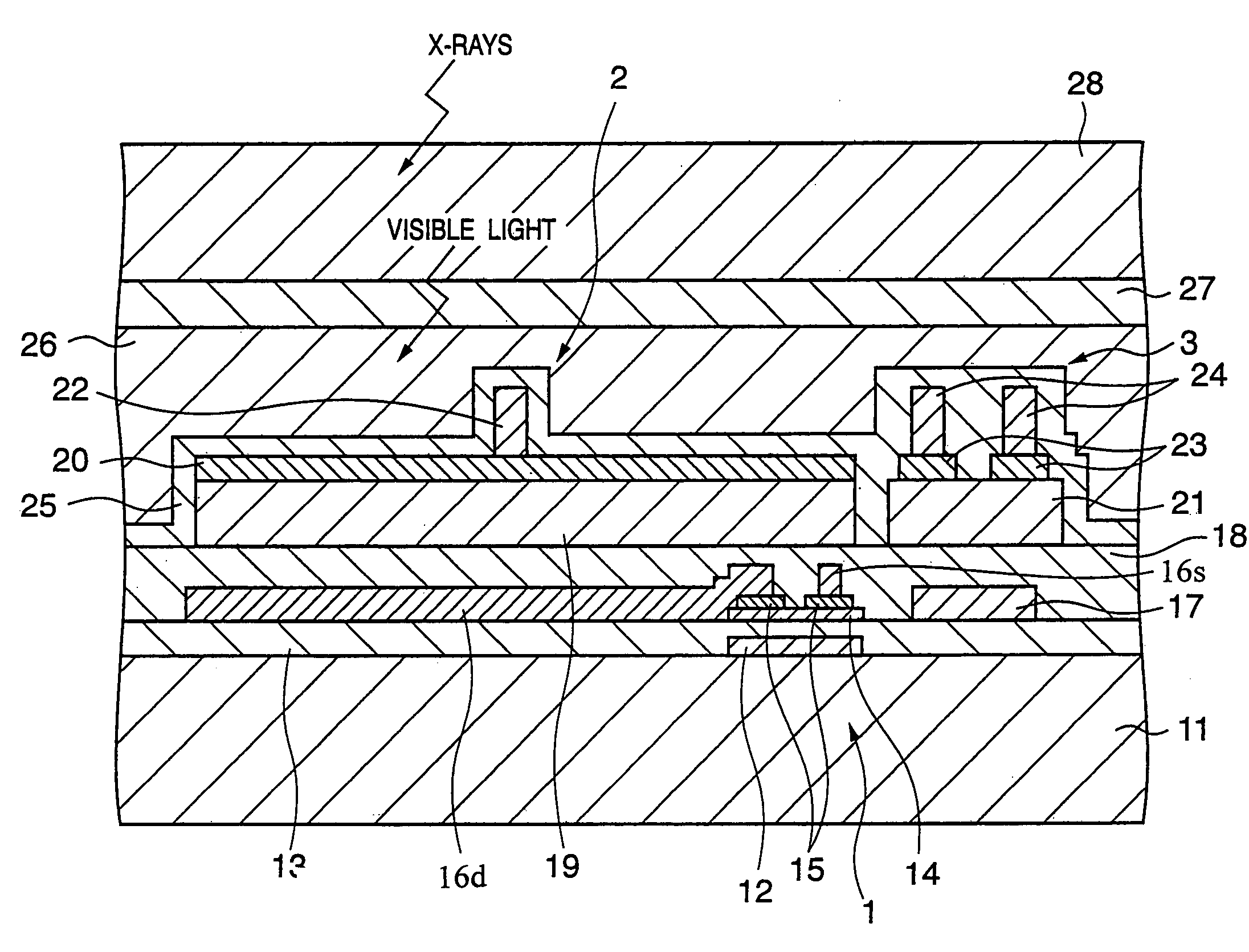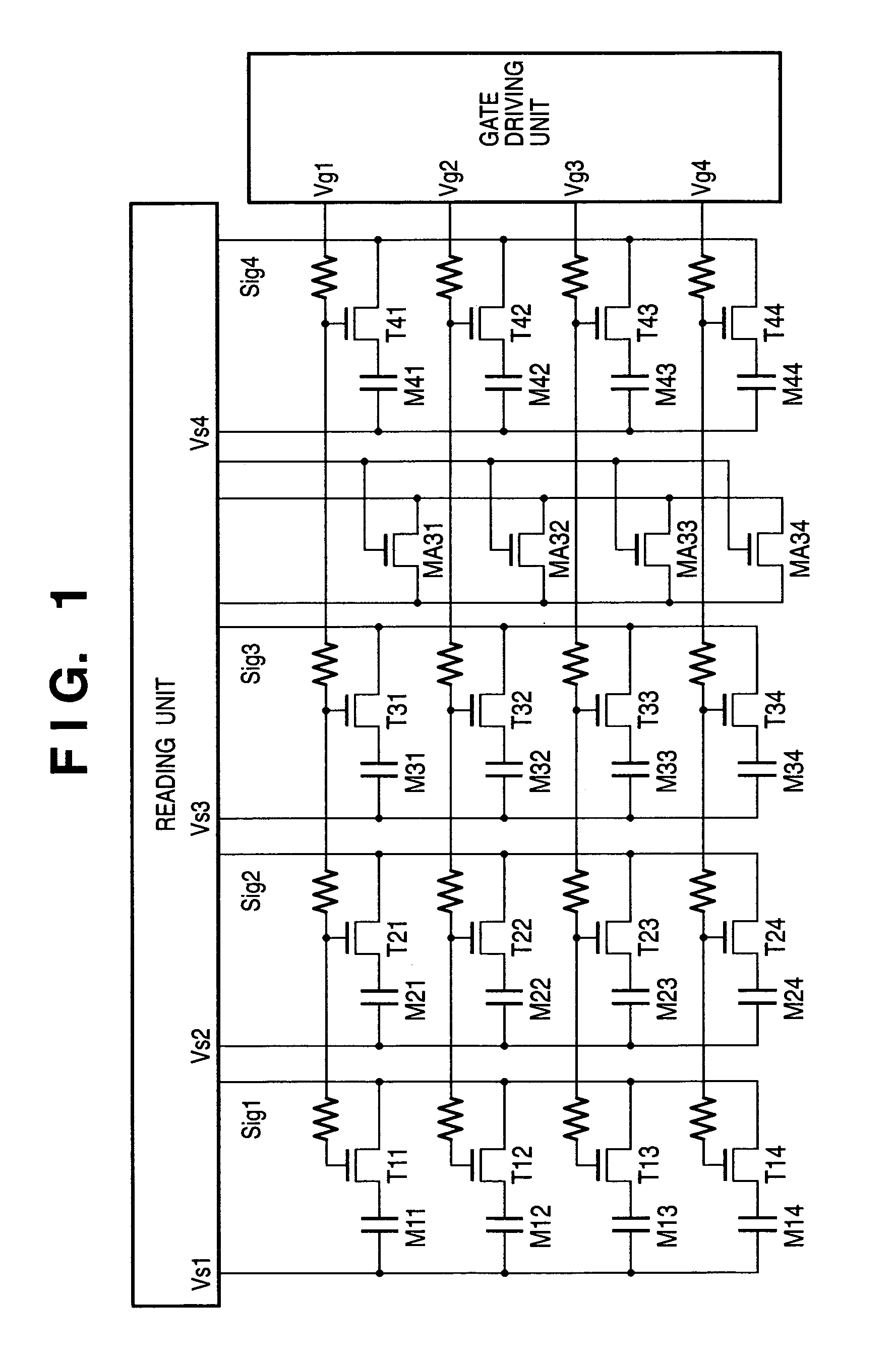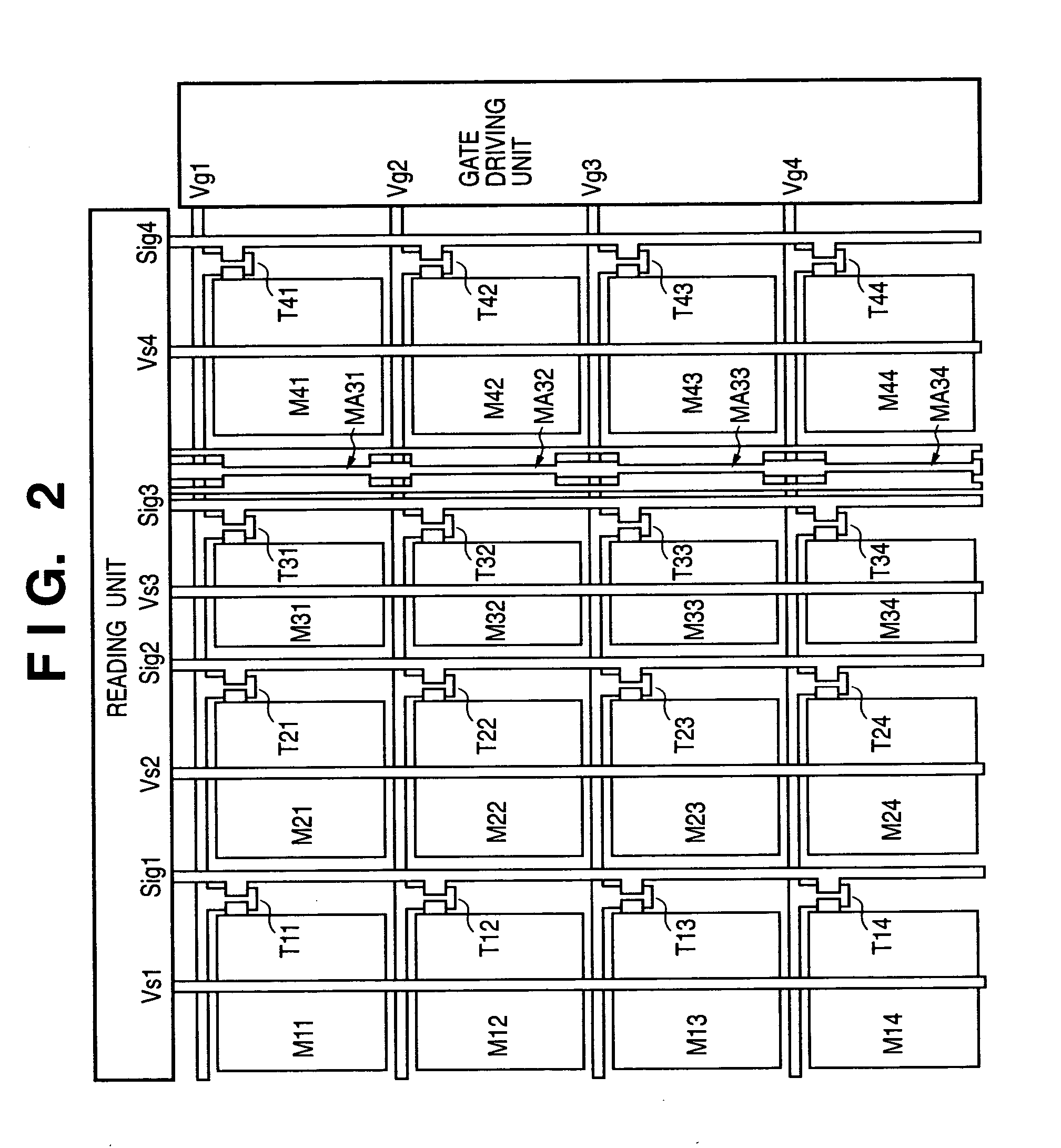Image sensing apparatus and method using radiation
a sensing apparatus and radiation technology, applied in the direction of x/gamma/cosmic radiation measurement, radioation controlled devices, instruments, etc., can solve the problems of no sensors that attenuate radiation at all, the layout of sensors is difficult to achieve, and the cost of the entire apparatus is increased
- Summary
- Abstract
- Description
- Claims
- Application Information
AI Technical Summary
Problems solved by technology
Method used
Image
Examples
first embodiment
[0079]The first embodiment of the present invention will be described first. FIG. 1 is an equivalent circuit diagram showing the circuit arrangement of a radiation image sensing apparatus according to the first embodiment of the present invention. FIG. 2 is a plan view showing the layout structure of the radiation image sensing apparatus according to the first embodiment. FIG. 3 is a sectional view showing the layer structure of one pixel of the radiation image sensing apparatus according to the first embodiment. FIGS. 1 and 2 show an example in which 4 (rows)×4 (columns) (=a total of 16) pixels are arranged in a pixel area. However, the number of pixels is not limited to this. For example, 2,000×2,000 pixels may be arranged. Semiconductor conversion elements here include an optical conversion element which converts light into charges and a radiation conversion element which directly converts radiation into charges.
[0080]In this embodiment, a combination of a MIS photoelectric conve...
second embodiment
[0102]The second embodiment of the present invention will be described next. FIG. 4 is an equivalent circuit diagram showing the circuit arrangement of a radiation image sensing apparatus according to the second embodiment of the present invention. FIG. 5 is a plan view showing the layout structure of the radiation image sensing apparatus according to the second embodiment. FIG. 6 is a sectional view showing the layer structure of one pixel of the radiation image sensing apparatus according to the second embodiment. FIGS. 4 and 5 show an example in which 4 (rows)×4 (columns) (=a total of 16) pixels are arranged in a pixel area, as in the first embodiment. However, the number of pixels is not limited to this. For example, 2,000×2,000 pixels may be arranged.
[0103]In this embodiment, a combination of a PIN photoelectric conversion element (first semiconductor conversion element) and a read TFT (switch element) or a combination of a PIN photoelectric conversion element (first semiconduc...
third embodiment
[0126]The third embodiment of the present invention will be described next. In this embodiment, a combination of a photoconductive element (first photoconductive element), read TFT (switch element), and image sensing capacitor (capacitive element) or a combination of a photoconductive element (first photoconductive element), read TFT (switch element), image sensing capacitor (capacitive element), and photoconductive sensor (second photoconductive element) for AEC is arranged for each pixel.
[0127]The layer structure of a pixel having a photoconductive sensor will be described here with reference to FIG. 7. FIG. 7 is a sectional view showing the layer structure of one pixel of a radiation image sensing apparatus according to the third embodiment of the present invention. This pixel has an etching-stopper-type read TFT 4, photoconductive element 7, photoconductive sensor 8, and image sensing capacitor 9. The structure of the read TFT 4 is the same as in the second embodiment.
[0128]As t...
PUM
 Login to View More
Login to View More Abstract
Description
Claims
Application Information
 Login to View More
Login to View More - R&D
- Intellectual Property
- Life Sciences
- Materials
- Tech Scout
- Unparalleled Data Quality
- Higher Quality Content
- 60% Fewer Hallucinations
Browse by: Latest US Patents, China's latest patents, Technical Efficacy Thesaurus, Application Domain, Technology Topic, Popular Technical Reports.
© 2025 PatSnap. All rights reserved.Legal|Privacy policy|Modern Slavery Act Transparency Statement|Sitemap|About US| Contact US: help@patsnap.com



